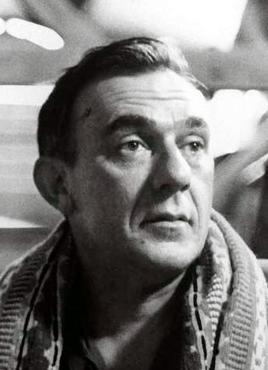Related Research Articles

Kenneth George Hall, AO, OBE, better known as Ken G. Hall, was an Australian film producer and director, considered one of the most important figures in the history of the Australian film industry. He was the first Australian to win an Academy Award.
Don Featherstone is an Australian filmmaker. His work includes documentaries about significant figures in Australian arts and culture, including authors David Malouf and Tim Winton, artist Brett Whiteley and dancer Robert Helpmann. Featherstone's works address social and historical issues such as beach culture, The Beach, gangs, The One Percenters about the Milperra Massacre, and war, Kokoda.

Robert Bruning was an Australian actor and film producer, who was the founder of film production firm Gemini Productions
The Cheaters is a 1930 Australian silent film directed by Paulette McDonagh and starring Isabel McDonagh. Phyllis McDonagh worked as art director. The McDonagh sisters made a number of self-funded films together in the late 1920s and early 1930s.

Forty Thousand Horsemen is a 1940 Australian war film directed by Charles Chauvel. The film tells the story of the Australian Light Horse which operated in the desert at the Sinai and Palestine campaign during World War I. It follows the adventures of three rowdy heroes in fighting and romance. The film culminates at the Battle of Beersheba which is reputedly "the last successful cavalry charge in history". The film was clearly a propaganda weapon, to aid in recruitment and lift the pride of Australians at home during World War II. It was one of the most successful Australian movies of its day. It was later remade in 1987 as The Lighthorsemen.
The Squatter's Daughter is a 1933 Australian melodrama directed by Ken G. Hall and starring Jocelyn Howarth. One of the most popular Australian films of the 1930s, it is based on a 1907 play by Bert Bailey and Edmund Duggan which had been previously adapted to the screen in 1910.

Thoroughbred is a 1936 Australian race-horse drama film directed by Ken G. Hall, partly based on the life and career of Phar Lap. Hollywood star Helen Twelvetrees was imported to Australia to appear in the film. The film also stars Frank Leighton and John Longden.
A Ticket in Tatts is a 1934 musical comedy film starring popular stage comedian George Wallace as an accident-prone stablehand. It was the last of three films Wallace made for F. W. Thring.

The Streets of London is a 1934 Australian film directed by F. W. Thring. It was a filmed version of a play by Dion Boucicault which Thring had produced on stage the previous year. It was the last film made by Efftee Film Productions – Thring ceased production afterwards with the aim of resuming it later but died in 1936 before he had the chance.
Is There Anybody There? is a 1976 Australian TV movie directed by Peter Maxwell and produced by Robert Bruning. It has been called the first colour tele movie made in Australia and its success led to Bruning being commissioned to make a series of TV movies, including The Newman Shame which also starred Lazenby.
The Alternative is a 1978 Australian television film about an unmarried editor of a woman's magazine who finds herself pregnant. She has a relationship with another woman.
The Death Train is a 1978 Australian made-for-television horror thriller film directed by Igor Auzins, and starring Hugh Keays-Byrne and Max Meldrum.
Demolition is an Australian TV movie.
Gone to Ground is a 1977 Australian TV movie about a man pursued by a killer.
Image of Death is a 1978 Australian TV movie about a woman who likes to live off other people's money.
Mama's Gone A-Hunting is a 1977 Australian television film. The title is taken from the English nursery rhyme and lullaby, Bye, baby Bunting. The film featured many well known Australian actors of the period, including Gerard Kennedy, Carmen Duncan, and starred Judy Morris
The Night Nurse is a 1978 Australian television film about the relationship between a former opera star and her night nurse.
Plunge Into Darkness is a 1978 Australian television film directed by Peter Maxwell and starring Olivia Hamnett, Bruce Barry, and John Jarratt. It concerns a couple on a holiday in the country who have a terrorising experience.
Joan Olive Bruce was an English-Australian actress born in Surrey, England to George and Olive Thompson, and taking the stage surname name of Bruce after her maternal grandmother.
Paradise is a 1975 Australian TV movie produced by Robert Bruning and directed by Bill Hughes.
References
- 1 2 "People: Lazenby gets through his "10-year sentence"". The Australian Women's Weekly . National Library of Australia. 7 December 1977. p. 8. Retrieved 14 May 2018.
- ↑ Scott Murray, Australia on the Small Screen 1970-1995, Oxford Uni Press, 1996 p110
- ↑ Beilby, Peter; Murray, Scott (September–October 1979). "Robert Bruning". Cinema Papers. pp. 517–519.
- ↑ "Judy 'bungs it on'". The Sydney Morning Herald. 23 July 1978. p. 83.
- ↑ "Sweet Girl for Tougher Roles". The Sydney Morning Herald. 18 December 1977. p. 88.
- ↑ "Joan's played a lot of mothers". The Sydney Morning Herald. 2 April 1978. p. 84.